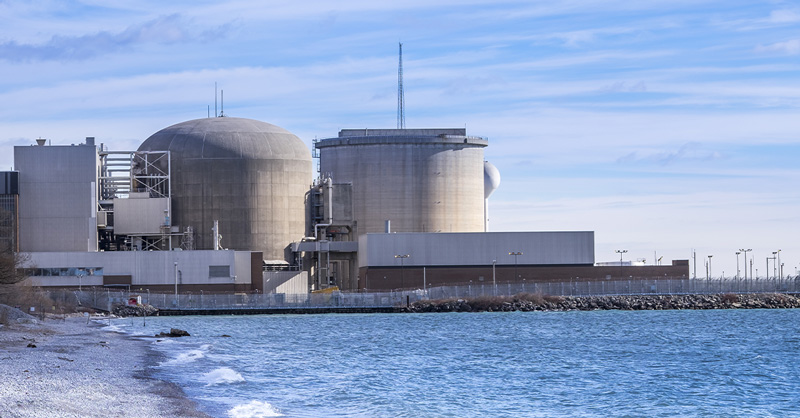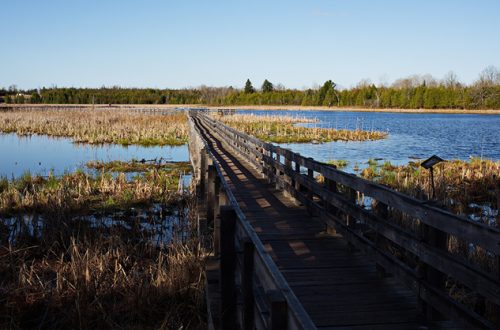On September 22, 2025, OSPE filed a submission to the Ontario government (ERO 025-0923: Future of the Natural Gas Expansion Program). Ontario must consider district thermal energy systems (a.k.a. district heating and cooling or thermal energy networks) alongside conventional gas expansion for affordable, reliable, lower-carbon heat for buildings, especially in rural, northern, and Indigenous communities.
Why Thermal Energy Networks Belong in the Plan
Thermal energy networks are shared, pipe-based systems that circulate hot or chilled water to buildings. They’re fuel-agnostic, meaning heat can come from multiple sources and change over time without touching customer-side equipment.
Integrating thermal energy networks will:
Use local resources & build resilience
Thermal energy will use local energy sources, such as waste heat from industry, data centres, and wastewater plants, as well as geothermal fields, solar thermal, large heat pumps, Combined Heat and Power (CHP), and eventually nuclear heat to build more self-sufficient and resilient communities.
Optimize Seasonal Thermal Energy Storage (STES)
Store excess heat from summer for use in winter, reduce demand peaks, and enhance reliability through durable, cost-effective storage systems.
Provide electrical grid relief
Reduce pressure on the electrical grid by avoiding a one-for-one electrification of heating. This frees up capacity for electric vehicles, industrial growth, and improved grid reliability.
Avoid carbon lock-in
Start with existing energy sources (including diesel or natural gas where necessary) and seamlessly transition to lower-carbon alternatives later, without needing to retrofit buildings.
Increase efficiency & lifecycle savings
Centralized plants and shared infrastructure reduce the need for on-site heating equipment, improving overall system efficiency and lowering total costs over the long term.
Encourage economic development
Investing in long-lived infrastructure creates skilled jobs and supports made-in-Ontario industries, including steel, piping, heat exchangers, and control systems.
A Unique Window: Pickering Nuclear CHP-Readiness
As Ontario plans retrofits for Pickering B, designing for CHP could supply large volumes of low-carbon heat to a Greater Toronto Area (GTA)-scale network, accelerating decarbonization and doubling the value of those units. Missing this window would forgo one of Canada’s largest urban low-carbon heat opportunities.
Let Gas Utilities Evolve: From Gas to Heat Utilities
Ontario’s gas Local Distribution Companies (LDCs) already have rights-of-way, planning, emergency response, metering/billing, and customer service. Rather than funding new, long-lived building-level gas hookups, enable LDCs to plan, own, and operate thermal networks and storage, selling measured thermal services with consumer protections aligned to electricity and gas.
What OSPE Recommended
- Broaden the Natural Gas Expansion Plan’s scope (Integrated Energy Planning): Evaluate district thermal as a complementary or alternative to gas where it delivers better long-term cost, reliability, and emissions outcomes.
- No-regrets guardrails:
- Prioritize fuel-agnostic networks and interconnection standards.
- Where gas is used, favour CHP-capable central plants over new one-off building connections.
- Avoid high, long-lived per-connection subsidies that raise future decarbonization costs.
- Use performance-based targets (greenhouse gas intensity, peak reduction, affordability) instead of prescribing technologies.
- Enable LDC evolution to heat utilities: Update statutes/regulations so LDCs can rate-base thermal networks and STES; allow thermal-as-a-service with appropriate consumer protections; reuse existing customer platforms and workforce.
- Pickering CHP-ready design: Advance engineering for CHP integration and long-term connection to a GTA network.
- Finance & governance: Treat thermal networks as core public infrastructure with access to long-term, low-cost capital; support municipal, Indigenous, and community ownership models; standardize contracts, data, and open protocols.
- Strategic pilots & market building: Fund near-term pilots (waste heat, large heat pumps, CHP, STES) with priority in rural, northern, and Indigenous communities; expand incentives to community-scale geothermal fields and district interconnections; build the workforce and supplier pipelines.
OSPE will continue engaging government, utilities, and communities to make district thermal a real option in Ontario’s energy toolkit. Ontario’s path to affordable, reliable, lower-carbon heat is bigger than pipes. Thermal energy networks give communities a practical on-ramp today and the flexibility to upgrade heat sources over time, without stranded assets.






Comment (1)
With opportunity like Pickering (and Darlington) nuclear generating station heat, the gas company is in a great position to offer customers decarbonized thermal energy and to lead a transformation of our energy systems.
Leave a Comment